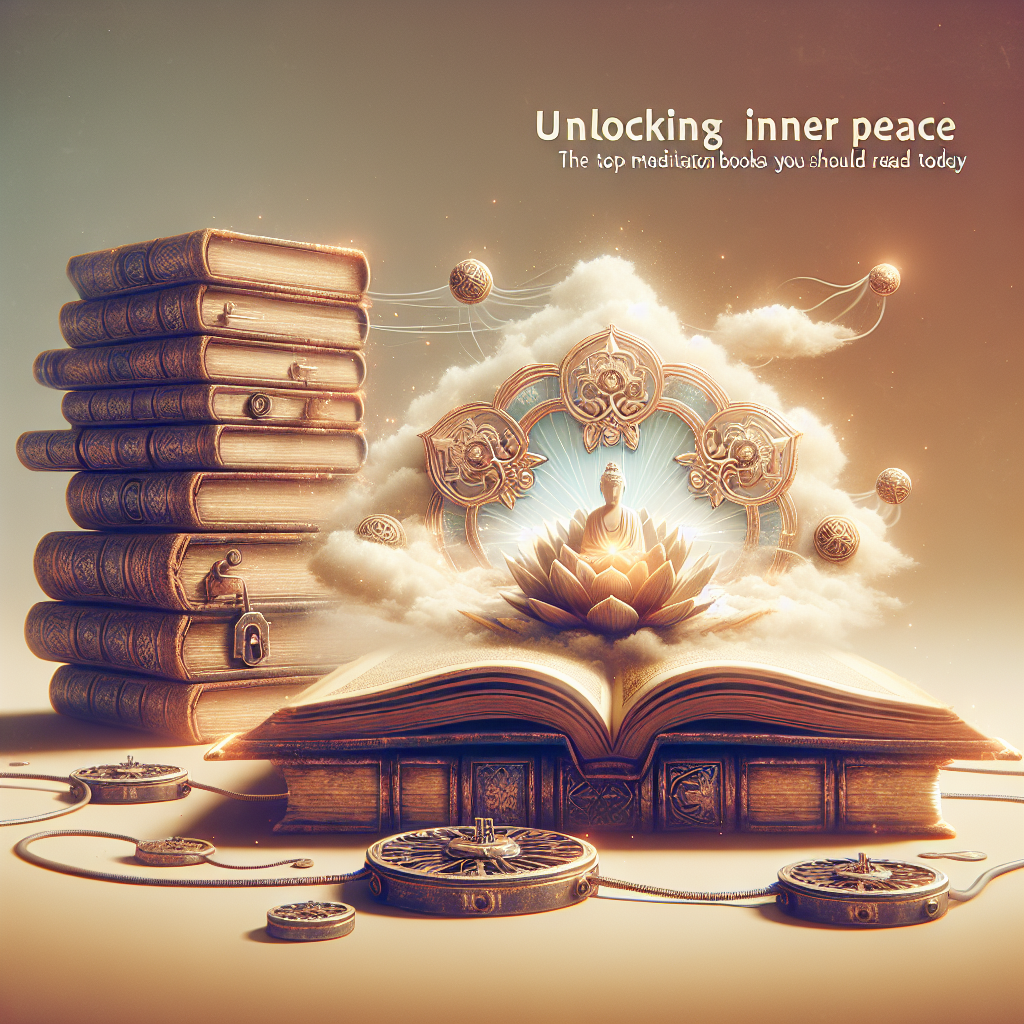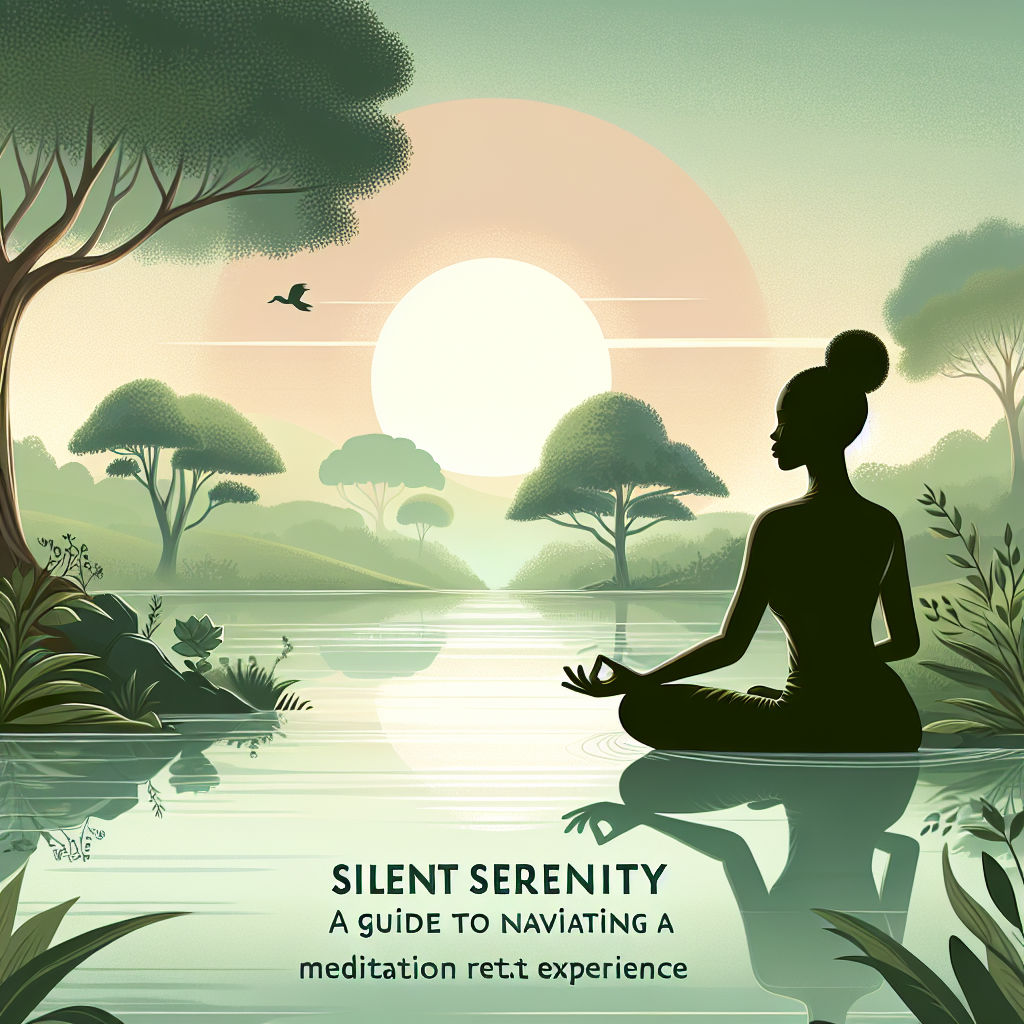In the fast-paced and chaotic world we live in today, finding inner peace and tranquility can seem almost impossible. Stress, anxiety, and constant distractions can easily take over our minds and leave us feeling overwhelmed and frazzled. However, there is a powerful tool that can help us navigate through the chaos and find a sense of calm and balance – meditation.
Meditation has been practiced for thousands of years and is known for its numerous mental, emotional, and physical benefits. It allows us to quiet the mind, focus on the present moment, and tap into our inner wisdom and intuition. It can help reduce stress, improve concentration, enhance emotional well-being, and promote a sense of overall peace and harmony.
If you are new to meditation or looking to deepen your practice, reading meditation books can be a great way to gain knowledge, inspiration, and guidance. In this article, we will explore some of the top meditation books that can help you unlock inner peace and transform your life.
1. “The Power of Now” by Eckhart Tolle
Eckhart Tolle’s “The Power of Now” is a modern spiritual classic that has helped millions of people around the world find inner peace and fulfillment. In this book, Tolle emphasizes the importance of living in the present moment and letting go of the past and future. He teaches readers how to quiet the mind, observe their thoughts and emotions without judgment, and connect with their true essence – the eternal and unchanging “being” that lies beyond the ego.
2. “Wherever You Go, There You Are” by Jon Kabat-Zinn
Jon Kabat-Zinn is a renowned mindfulness teacher and the founder of the Stress Reduction Clinic at the University of Massachusetts Medical School. In “Wherever You Go, There You Are,” Kabat-Zinn introduces readers to the practice of mindfulness meditation and how it can help them cultivate a deeper sense of presence, awareness, and compassion in their daily lives. The book offers practical exercises, guided meditations, and insightful reflections that can help readers develop a greater sense of inner peace and well-being.
3. “The Untethered Soul” by Michael A. Singer
“The Untethered Soul” by Michael A. Singer is a transformative book that explores the nature of the mind, ego, and consciousness. Singer invites readers to question their beliefs, patterns, and attachments and invites them to let go of the limiting thoughts and emotions that hold them back from experiencing true freedom and inner peace. The book offers profound insights, practical tools, and meditative practices that can help readers cultivate a deep sense of presence, acceptance, and inner harmony.
4. “10% Happier” by Dan Harris
Dan Harris is a well-known television anchor who struggled with anxiety and panic attacks until he discovered the power of meditation. In “10% Happier,” Harris shares his personal journey with meditation and how it has transformed his life and mental well-being. The book offers a candid and humorous look at the benefits and challenges of meditation, as well as practical advice and tips on how to incorporate mindfulness into a busy and hectic lifestyle.
5. “Radical Acceptance” by Tara Brach
Tara Brach is a clinical psychologist and mindfulness teacher who combines Western psychology with Eastern spiritual practices in her teachings. In “Radical Acceptance,” Brach explores the power of self-compassion, mindfulness, and loving-kindness in cultivating inner peace and well-being. She offers practical exercises, guided meditations, and heart-opening practices that can help readers embrace themselves with love and acceptance, and let go of self-judgment and criticism.
6. “The Miracle of Mindfulness” by Thich Nhat Hanh
Thich Nhat Hanh is a Zen master and peace activist who has inspired millions of people around the world with his teachings on mindfulness and compassion. In “The Miracle of Mindfulness,” Thich Nhat Hanh shares simple and practical techniques for living in the present moment, cultivating inner peace, and nurturing a deep connection with oneself and others. The book offers insightful reflections, meditative practices, and mindful exercises that can help readers find peace and joy in every moment of their lives.
7. “The Headspace Guide to Meditation and Mindfulness” by Andy Puddicombe
Andy Puddicombe is a former Buddhist monk and the co-founder of the popular meditation app Headspace. In “The Headspace Guide to Meditation and Mindfulness,” Puddicombe offers a practical and accessible introduction to meditation and mindfulness for beginners and experienced practitioners alike. The book provides step-by-step guidance, easy-to-follow exercises, and scientific explanations on how meditation can transform the mind, body, and spirit.
8. “Meditation for Beginners” by Jack Kornfield
Jack Kornfield is a meditation teacher and author who has been instrumental in bringing mindfulness and Buddhism to the West. In “Meditation for Beginners,” Kornfield offers a comprehensive and user-friendly guide to meditation for those who are new to the practice. The book covers the basics of meditation, different techniques, common challenges, and how to cultivate mindfulness and compassion in everyday life. It also includes guided meditations and inspirational stories to help readers integrate meditation into their daily routine.
FAQs:
Q: Can anyone practice meditation?
A: Yes, anyone can practice meditation regardless of age, gender, or background. Meditation is a universal practice that can benefit everyone who is willing to commit to it.
Q: How long does it take to see the benefits of meditation?
A: The benefits of meditation can vary from person to person. Some people may experience immediate benefits such as reduced stress and increased calmness, while others may take longer to notice changes in their mental, emotional, and physical well-being. Consistent practice is key to experiencing the full benefits of meditation.
Q: Do I need to sit in a specific posture to meditate?
A: While sitting cross-legged on the floor with a straight back is a common meditation posture, you can meditate in any position that feels comfortable for you. You can sit on a chair, lie down, or even walk while practicing mindfulness. The most important thing is to be relaxed and alert.
Q: How often should I meditate?
A: The frequency of your meditation practice depends on your schedule, lifestyle, and personal preferences. Some people meditate daily for a few minutes, while others may practice longer sessions a few times a week. It is important to find a routine that works for you and commit to it consistently.
Q: What if I find it difficult to quiet my mind during meditation?
A: It is common to have a busy and restless mind when starting a meditation practice. The key is to observe your thoughts without judgment and gently guide your focus back to your breath or a mantra. With time and practice, you will find it easier to quiet the mind and enter a state of deep relaxation and inner peace.
In conclusion, reading meditation books can be a powerful and transformative experience that can help you unlock inner peace, awareness, and well-being. Each of the books mentioned above offers unique insights, practical tools, and inspirational guidance to support you on your journey towards greater self-discovery and fulfillment. Whether you are new to meditation or a seasoned practitioner, exploring these books can deepen your practice and enrich your life in profound ways. Remember, the path to inner peace begins within you, and meditation is a powerful tool that can help you connect with your true essence and experience the peace and harmony that resides within.




Leave A Comment